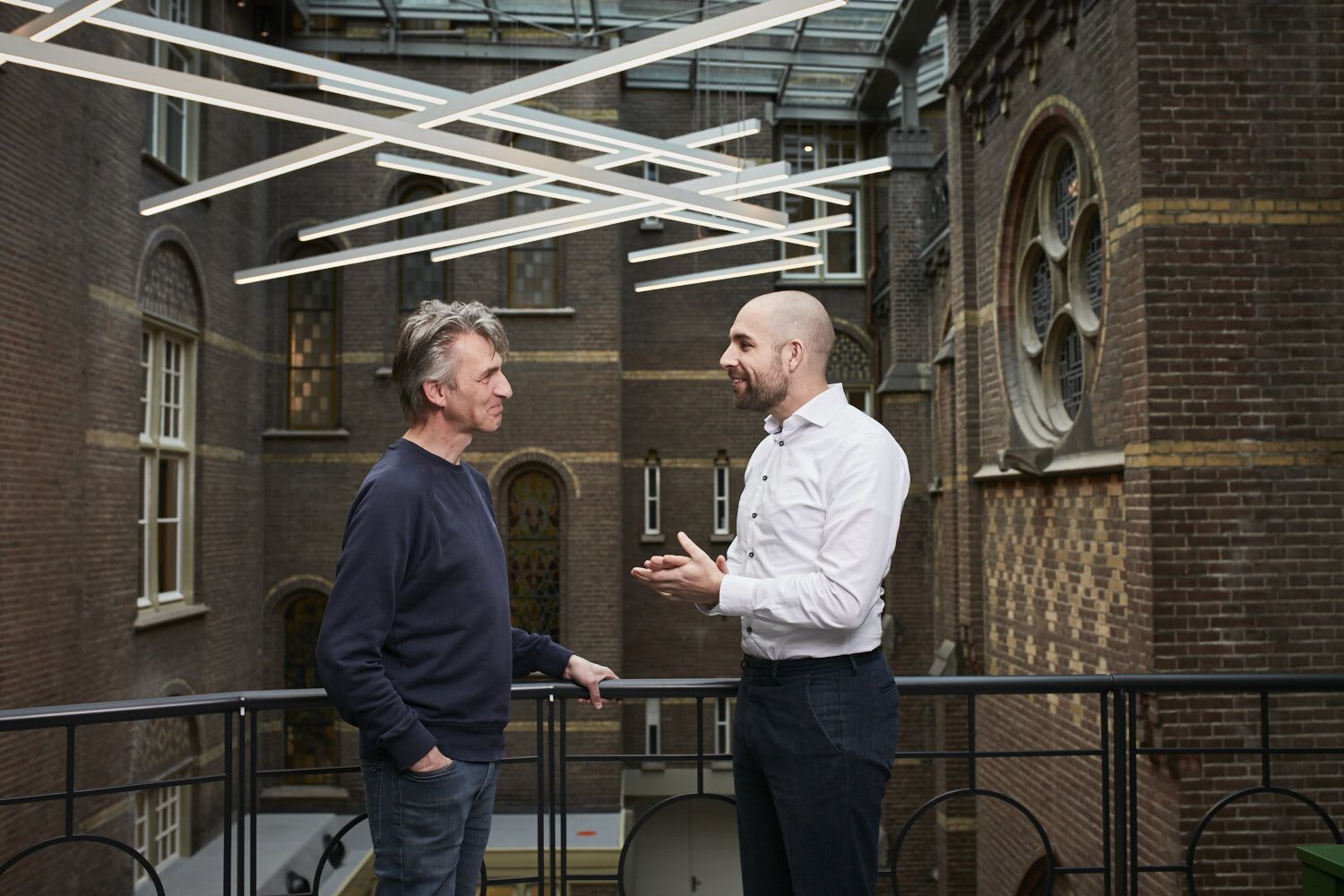
AI is ready!
In this interview, Jonathan Aardema interviews Prof. Eric Postma (professor of Cognitive Science and Artificial Intelligence at Tilburg University) about the why, how, and what of artificial intelligence applications. What do we see in practice, and what does science say about it?
Within companies, I see a lot of people who don’t quite know what falls under Artificial Intelligence (AI). What is your view from the perspective of science?
Very sober. Artificial Intelligence is nowadays a buzzword, but the field has been around since the 1950s. A lot of people claim that machines can do things faster and better than people, but machines have been doing that for quite a long time. Take a pocket calculator, which can count much faster than most people.
What is new is speech and image recognition. AI is very good at recognizing patterns without knowing the context. Consider, for example, the automatic recognition of skin cancer from skin images. AI performs better than people but does not know or understand anything about the patient himself. We call it Narrow AI. That is more limited than what people can do, but that doesn’t matter. A pocket calculator is also more limited, but does what it has to do, namely calculating. Still, people decide on the conclusion from the calculations.
In practice, we see that many organizations now want to take steps around AI, for example, about image recognition. Why is it now emerging?
The big breakthrough is deep learning. That too is already 30 years old but appears to work well if you increase the volume of data and more computer power. Then you can, for example, label images of a dog and train the system to recognize dog breeds. The system can do that very well, just as well as people, but it sometimes makes stupid mistakes that people would never make.
Another example is the recognition of breast cancer on scans. A study has just been completed, which showed that AI could do that better than specialists. A system does not receive a lunch dip and does not get tired after assessing too many scans in succession. That is also narrow AI; you only train the system to recognize spots; you don’t need to know more. What happens next is up to the doctor. I see this as a reinforcement of the instruments. The big question is: how are we going to utilize the complementarity of man and machine optimally — some things people can do better than a computer.

We are working on the development of a model to reduce absenteeism in healthcare. We study the variables that predict to prevent disease. Half a percent less absenteeism quickly yields a lot for thousands of employees. We also see that, in addition to the models, human judgment remains essential.
That’s right. Then you get hybrid intelligence, where a human operator works together with a deep learning system. The most significant limitation of AI systems is that they do not know the world. As a human being, you gain knowledge from your baby time, and we do not yet know how to transfer this broad knowledge to systems.
I, therefore, see more of a future in which you develop AI to compensate for the weaknesses of people and vice versa. It is about the combination of the power of the system and the power of the expert.
How do you enroll AI within an organization? In practice, we notice that starting small can also work within traditional organizations. What does science say; do you have to adjust existing elements or start all over again?
I think it makes sense that many companies still have cold feet because it is not yet a proven process. Moreover, I expect AI to play an increasingly important role in all branches of industry. I am not a consultant, but my advice would be to start small and then expand. For companies with a successful business, it is wise to keep the existing business model and also to build a new model around AI carefully. The alternative is a radical change, for which you need other staff. TNT, for example, has deliberately chosen to become a data-driven company. They now use predictive models to predict when someone will be home.
With the evolution of these kinds of developments, new risks arise. What challenges do you see?
The biggest challenge is how we, as a society, deal with the developments around data. How do we ensure the right balance between innovation and the protection of privacy? Take the patient’s file. You can use this to improve patient care, but how do you protect the data in an ethical matter?
Another challenge is how to deal with the power of the systems and the power of the experts. An expert is an expert; never make the mistake of having a machine override the expert. A problem may be that the system consistently does something wrong. How do you fix that, and how do you deal with it in your process? If you want to gain confidence in the system, you also want to be able to see where it makes mistakes. Making mistakes isn’t that bad, people also make mistakes, as long as you know where.
Ultimately, the greatest threat is human. Everyone can apply deep learning, but not everyone knows the basic principles of statistics and analysis that is needed to do it well.
The developments from science to practice are in full swing. Where is Artificial Intelligence now, do you expect significant innovations?
The technology is already there and reaches the point of saturation. There will be improvements, making the systems more robust and requiring fewer data. The real innovation is often in the search for practical applications where you can make a difference with AI. It is not just about the technology and the identification of tasks, but also about the human and organizational side. For example, we are now investigating the recognition of fractures on X-rays. These types of solutions take time; it takes about ten years before you have integrated it into the working methods of the hospital and with the health insurer. But that it will happen is inevitable.

How old-fashioned corporate technology kills sustainable ambitions
Creating sustainable businesses is definitely one of the biggest challenges for big corporations. The ‘why’ in this story is clear as daylight, it is the ‘how’ and ‘what’ that is nagging them.

Visiting London for the Tableau Partner Executive Kick-Off 2020
Every year Tableau invites its most valuable partners to kick off the new year together. The theme for this year was Accelerate, so let’s get right to the point. This exciting event was focused on three main areas.
